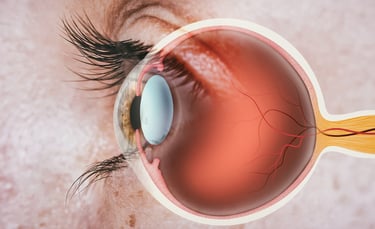eStoreRx™
Online Supplement Dispensary
eStoreRx™ is an easy direct-to-patient ordering & fulfilment program for lifelong wellness.
For over 40 years, Biotics Research Corporation has revolutionized the nutritional supplement industry by utilizing “The Best of Science and Nature”. Combining nature’s principles with scientific ingenuity, our products magnify the nutritional
eStoreRx™ is an easy direct-to-patient ordering & fulfilment program for lifelong wellness.
Biotics Research is proud to expand our commitment to education with the Wellness Unfiltered Pro Podcast. Each episode delves into key health topics and the clinical applications of our premier products. Through candid, insightful conversations, our team offers practical guidance to keep you informed and empowered as a healthcare professional.
December 18 2025
Low-carbohydrate diets are perhaps most popular for weight loss, but the strictest form of carbohydrate restriction – a ketogenic diet – has been show...
 A paper published recently in the Journal of Insulin Resistance makes the case that putting type 2 diabetes into remission could have a powerful impact on preventing or slowing progression of diabetic retinopathy, and that primary care physicians can play a role in making this happen.
A paper published recently in the Journal of Insulin Resistance makes the case that putting type 2 diabetes into remission could have a powerful impact on preventing or slowing progression of diabetic retinopathy, and that primary care physicians can play a role in making this happen.
Diabetic retinopathy (DR) is a leading cause of blindness in adults in the US. And while type 2 diabetes (T2D) is typically considered to be a chronic and progressive illness, diet and lifestyle changes have been shown to put T2D into remission, suggesting that being diagnosed with T2D or prediabetes is not an irreversible situation in which a patient will inevitably face increasingly severe complications.
Ophthalmologists may be best trained to identify and diagnose DR, but family physicians and general practitioners are the professionals most likely to encounter patients newly diagnosed with T2D and thus are the ones in the best position to guide patients toward strategies that can put the diabetes into remission, which would presumably prevent retinopathy from developing at all, or halt or slow the progression if it is already present. The authors of the paper stated, “The most impactful way a primary care clinician could impact DR would be assisting in making the T2D go into remission.”
According to the paper, “The pathophysiology of DR suggests that both neural networks and microvasculature are under assault for years prior to identification of haemorrhages, exudates, new blood vessel growth or ischemic changes.” This means that some of the hallmarks associated with DR may not be evident until the condition is already advanced. So, if the goal is to prevent or slow DR, then it’s critical to address the underlying cause – the type 2 diabetes – as early as possible.
Family physicians may need specialized training in order to identify DR in its earliest stages, and it’s also important for ophthalmologists and patients alike to be aware that type 2 diabetes remission is even possible. There are numerous ways to achieve this, but a consensus report from the American Diabetes Association stated, “Reducing overall carbohydrate intake for individuals with diabetes has demonstrated the most evidence for improving glycemia and may be applied in a variety of eating patterns that meet individual needs and preferences.” [Emphasis added.]
Submit this form and you'll receive our latest news and updates.
*These statements have not been evaluated by the Food and Drug Administration. This product has not intended to diagnose, treat, cure, or prevent any disease.
Proposition 65 Warning
© 2025 Biotics Research Corporation - All Rights Reserved
Submit your comment